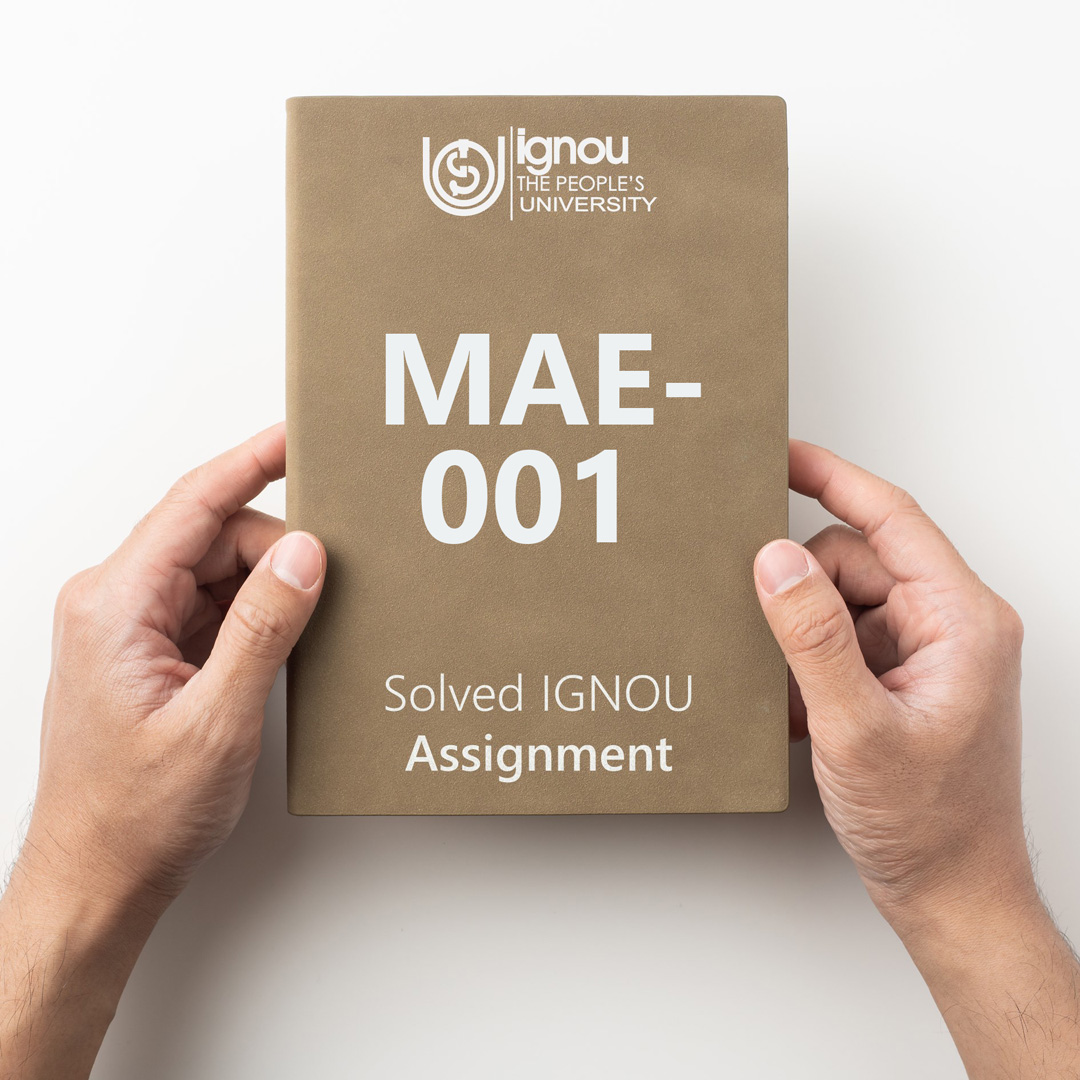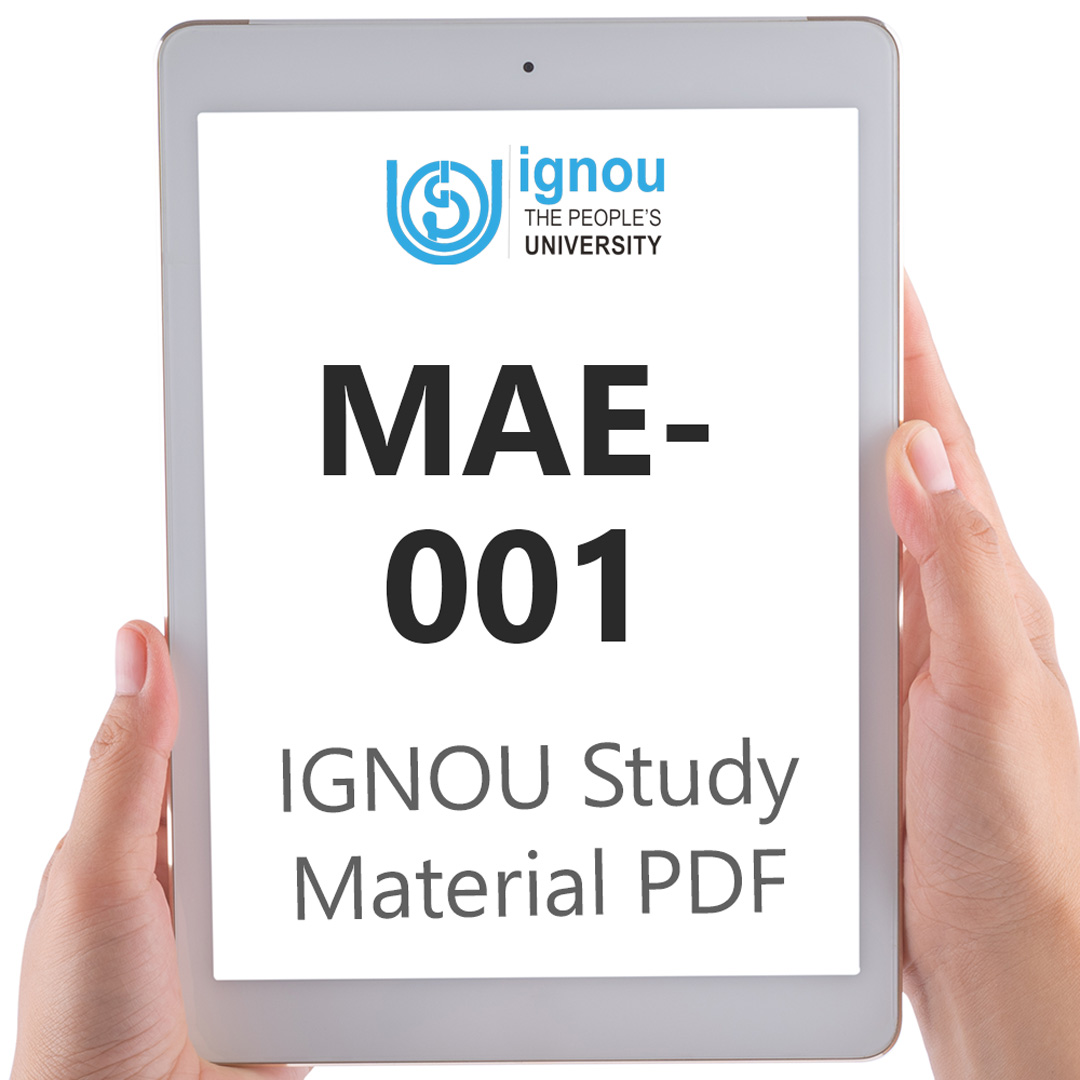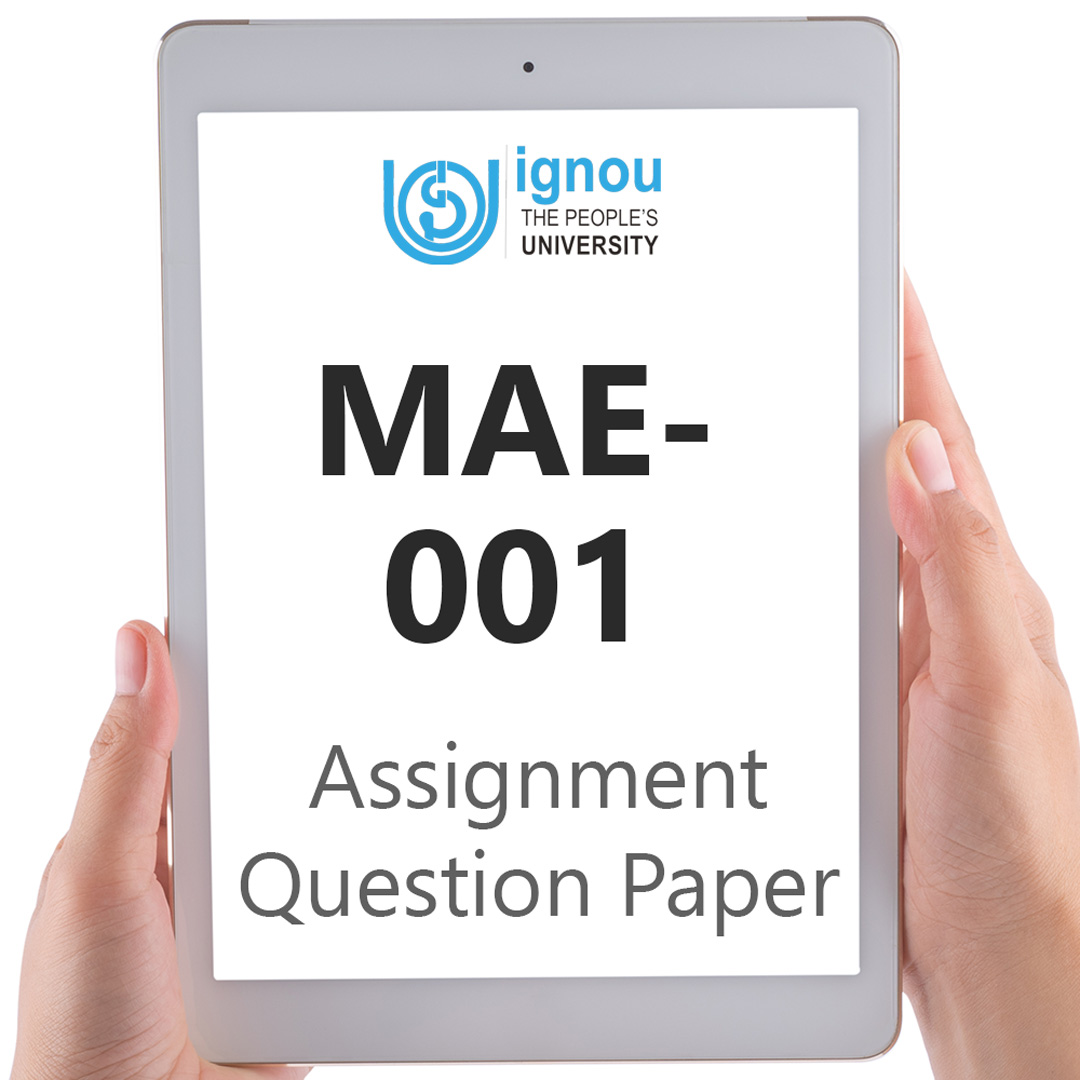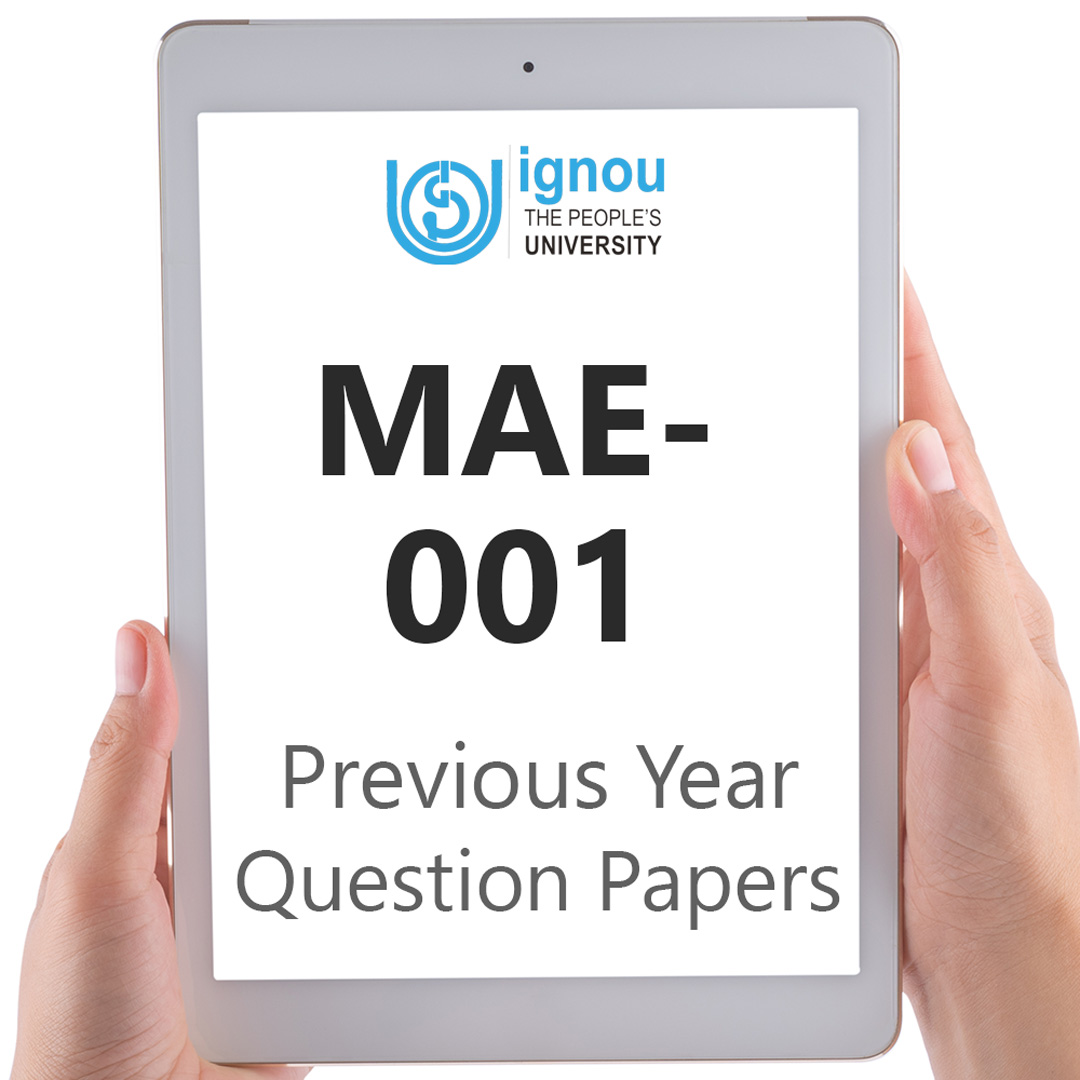If you are looking for MAE-001 IGNOU Solved Assignment solution for the subject Understanding Adult Education, you have come to the right place. MAE-001 solution on this page applies to 2023 session students studying in MAEDU, MAAE, PGDAE, PGCAE courses of IGNOU.
MAE-001 Solved Assignment Solution by Gyaniversity
Assignment Code: MAE-001/TMA/2023
Course Code: MAE-001
Assignment Name: Understanding Adult Education
Year: 2023
Verification Status: Verified by Professor
Answer the following questions in about 500 words each.
a) Discuss the major shifts in the international policy perspective on adult education and lifelong learning.
Ans) The major shifts in the international policy perspective on adult education and lifelong learning are as follows:
Fundamental Education (1950s-1960s)
In the post-Second World War era, UNESCO promoted literacy as part of its efforts to promote basic education and individual development. It promoted basic education to end illiteracy. Fundamental education taught reading and writing. The Cold War decreased support for global literacy. The international community recognised the need to eliminate illiteracy and encourage autonomous literacy abilities. emerging nations only conducted national literacy programmes.
Functional Literacy (1960s-1970s)
International organisations promoted human capital education models in the 1960s and 1970s, seeing education as a critical input for economic development. Literacy was considered essential for economic progress and national development. UNESCO promoted functional literacy and economic development. To improve farmers' efficiency and output, the Experimental World Literacy Programme (EWLP) was launched in 1966 and executed in eleven countries until 1973 with UNDP and other international agencies' financial and technical support.
UNESCO expanded Functional Literacy in 1978: Functionally literate people can do all the things that require literacy for their group and community to function well and for them to continue using reading, writing, and arithmetic for their personal and the community's development. Functional literacy now encompasses a variety of human concerns and life functions. Functional literacy implies lifelong learning.
Paulo Freire's Radical Approach to Literacy (1970s)
Paulo Freire’s radical literacy approach inspired UNESCO and other international institutions in the 1970s. This method saw reading, writing, and arithmetic as a means to acquire critical consciousness about one's social situation and take action to alter it. The Persepolis Declaration (1975) showed Freire's effect on UNESCO's view of literacy, which went beyond basic literacy skills and stressed literacy's transformative power. However, pseudo-Freirian literacy programmes in underdeveloped nations taught development-oriented literacy skills and knowledge while sustaining the status quo.
Broadening the Concept of Literacy (1980s-1990s)
International financing and interest in adult literacy programmes plummeted in the 1980s and 1990s. Primary education was prioritised over adult education due to World Bank economic reforms. UNICEF and UNESCO protested this trend in the 1980s and promoted literacy and education for everybody. New technology and information media in industrialised countries demanded higher levels of knowledge, skills, and understanding in the 1980s and 1990s, broadening literacy definitions. Literacy now includes reading, writing, and counting as well as a variety of information processing skills. The International Literacy Year (1990) and the World Declaration on Education for All, adopted in Jomtien, Thailand, framed literacy as part of satisfying the basic learning requirements of all children, youth, and adults. The Hamburg Declaration (1997) also supported literacy as a tool for lifelong learning and community engagement.
Growing Emphasis on Adult Literacy and Learning (2000-present)
International planners have revived interest in literacy since the World Education Forum in Dakar (2000). Illiteracy hinders development, according to the ILO, World Bank, OECD, UNICEF, UNESCO, and UNDP. Despite growing interest in literacy, organisations have different literacy understandings. The 2002-launched UN Literacy decade (2003–2012) views literacy as necessary life skills for every child, youth, and adult to participate in 21st-century society and economies and as a crucial stage in basic education (UNESCO. 2003). The World Bank has recently promoted Adult and Nonformal Education (ANFE), which addresses all learning requirements of children and adults, not only perspectives literacy.
The Millennium Development Goals (MDGs) of 2000 aim to reduce poverty via education. Adult reading and learning are not expressly included in the MDGs, despite growing attention. Goal 3 emphasises adult education. Since the mid-20th century, global literacy perspectives have expanded. Functional literacy for economic growth and Freire's critical literacy for social and political transformation have replaced fundamental education's concentration on basic literacy skills. Literacy now includes different literacies, literacy practises, and lifelong learning.
b) What is participatory evaluation? Explain the relative significance of different approaches to participatory evaluation in the field of adult education.
Ans) Participatory evaluation in adult education is an approach to program evaluation that involves the active participation of stakeholders, including adult learners, educators, and community members. This approach seeks to promote transparency, inclusivity, and accountability in the evaluation process. It recognizes the importance of involving those who are directly affected by the program in assessing its effectiveness and impact.
The use of participatory evaluation in adult education can lead to improved program outcomes, increased ownership and commitment from stakeholders, and greater program sustainability. However, the success of participatory evaluation depends on the selection of appropriate evaluation approaches. The relative significance of different approaches to participatory evaluation in the field of adult education may depend on the specific context and goals of the program being evaluated.
The relative significance of different approaches to participatory evaluation in the field of adult education are:
Cost-Benefit Analysis: This approach involves comparing the costs of a program with its expected benefits. It aims to determine whether the program is cost-effective and whether it provides value for money. In adult education, cost-benefit analysis can be used to evaluate the economic impact of educational programs, especially in relation to the costs of delivering the program versus the benefits to the learners and the community. The analysis can help decision-makers to determine the viability of the program and justify the allocation of resources. For instance, a cost-benefit analysis can help determine the return on investment of an adult education program by comparing the program's cost with the economic benefits of the learners' new skills and knowledge.
SWOT Analysis: This approach involves identifying the strengths, weaknesses, opportunities, and threats associated with a program. It can help to identify areas that need improvement and opportunities for growth. In adult education, SWOT analysis can be used to assess the overall effectiveness of a program, identify the program's strengths and weaknesses, and identify potential opportunities for growth or improvement. For instance, a SWOT analysis can help identify the strengths of an adult education program such as a highly qualified faculty, or the weakness of the program such as insufficient funding.
Value-based Analysis: This approach involves assessing the values and principles that underpin a program. It aims to determine whether the program aligns with the values and goals of the learners and the community. In adult education, value-based analysis can be used to evaluate the alignment of a program with the needs and aspirations of the adult learners and the community. It can help program managers to determine if the program meets the needs of the learners and if it supports the community's social and economic development. For instance, a value-based analysis can help identify if an adult education program aligns with the cultural values and goals of the community and if it fosters inclusivity and diversity.
Capacity Inventory Check-list: This approach involves evaluating the capacity of the educational institution or organization to deliver the program effectively. It can help program managers to identify strengths and weaknesses in the organizational infrastructure, staffing, resources, and partnerships, and develop strategies to enhance the capacity. In adult education, a capacity inventory checklist can help identify the resources required for successful implementation of a program, such as the adequacy of physical facilities, training materials, and qualified instructors. It can also help identify gaps in the program's infrastructure that need to be addressed to achieve program goals.
In conclusion, participatory evaluation in adult education is essential to ensuring that educational programs and initiatives are relevant, effective, and responsive to the needs of adult learners and the community they serve. The selection of appropriate evaluation approaches is critical to the success of participatory evaluation. The cost-benefit analysis, SWOT analysis, value-based analysis, and capacity inventory checklist are all valuable approaches to participatory evaluation in adult education, depending on the specific context and goals of the program being evaluated.
c) Critically analyse the implications of different theories of learning to adult learning.
Ans) The implications of different theories of learning to adult learning is as follows:
Learning by Association
This learning theory has greatly influenced modern schooling. Behaviourists view teaching as manipulating the environment to affect student behaviour and improve education. This theory's primary implications:
Classrooms should be enjoyable. Teachers should be courteous and friendly.
Effective classroom work requires teacher-student connection. Students should understand the value of their education. To achieve objectives, classroom experiences should be centred on students' needs and related to their real-world experiences.
To help students progress confidently, classroom activities should be ordered by difficulty. The students need praise and encouragement from the teacher to keep learning.
Learning by Conditioning
Reinforcement is the key to Skinner's learning theory. Exercise enhances a learned reaction without repetition. Repetitive schoolwork depresses and bores students. Repetition harms. Practicing many skills helps strengthen theoretical understanding.
Operant conditioning relates educational activities to behaviour. Reinforcement helps Skinner learn. He also believes instructional tools are necessary for human learning control. Skinner identified positive and negative reinforcements.
Skinner identified positive and negative reinforcements. Positive reinforcement boosts response likelihood. Positive reinforcement rewards. Positive reinforcement includes praise, smiles, prizes, money, enjoyment, etc. Removing stimulus reinforcement in negative reinforcement increases the desired behaviour. We can close windows and doors to reduce noise and avoid mistakes by answering correctly. Noise and bad replies are negative reinforcers. Thus, avoiding negative reinforcers relieves unpleasantness.
Learning by Doing (Trial and Error)
Learning happens. Product impacts process. Learning strengthens. Pain avoidance and pleasure seeking are built in. Every taught comfort and delight reaction is likely to be repeated. Irritating and disastrous responses are rarely repeated. because the cat's puzzle box escape is profitable and fun. Cats quickly master puzzle box opening. It repeats answers.
Effect Law Elderly claims that a stimulus reaction that pleases the organism will reoccur. S-R. Stimulus-Response strengthens. A stimulus that bothers the organism rarely repeats. Stimulus-responses weaken. Class should be fun. Teaching needs student-teacher interaction. Students should find class interesting and relevant.
The Law of Exercise develops relationships via practise. Repeated reactions improve. Repeating strengthens S-R. After repeated exposure, the cat opened the puzzle box. "Exercise" reinforces taught responses without being boring. Students dislike repetitive schoolwork. Repetition hurts.
The law of ready reveals the learner's willingness to connect S-R. Learning occurs when the learner is ready and willing. This answer sticks. "Hungry," the cat controlled the machinery. A ready conduction unit stimulates. Stimulation irritates. Thus, "effect" applies. Ready students learn. Mental and physical readiness. Physical health influences mental health. Mental preparation counts. Learning takes mental preparation.
Learning by Insight
This theory is mostly about how to make educational activities that help people learn cognitively. The most important things this theory means for education are as follows:
Intelligence is a key part of getting new ideas. So, the problems the learners are given should be related to their lives. The role of experience in giving insight is equal. Problems that are well within the learners' experiences can be solved by insight, which will also enrich the learners' experiences.
Individuals can only gain insight by working hard all the time. Learners should be told to work hard to reach the goal. For that, the subject matter needs to be structured and organised in the right way.
Learners should have enough time to look at the whole situation, and when all the important clues are in their line of sight, they get the "insight" they need to solve the problem. It puts a lot of focus on the study of learner traits that a teacher can use to improve the quality and quantity of student insights.






